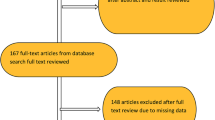Abstract
Background
Radical resection with regional lymphadenectomy is recommended for all sporadic gastric carcinoids. Local resection, however, is accepted for some carcinoids from other gastrointestinal sites (i.e., appendix and rectum). We sought to examine the relation of tumor size and depth to lymph node metastasis to determine whether gastric carcinoids can be selected for endoscopic resection. We also sought to quantify the utilization of lymph node sampling.
Methods
984 patients with localized gastric carcinoids who underwent cancer-directed surgery between 1983 and 2005 were identified from the Surveillance, Epidemiology, and End Results (SEER) registry database.
Results
Tumor size and depth predicted probability of lymph node metastasis. Lymph node metastasis was not seen in intraepithelial (IE) tumors <2 cm. Of tumors <1 cm invading into the lamina propria or submucosa (LP/SM), 3.4% had lymph node metastasis. Excluding IE tumors <2 cm and LP/SM tumors <1 cm, all other subgroups based on size and depth had rates of lymph node metastasis ≥ 8%. Tumor size and depth predicted probability of lymph node sampling. Overall, only 21% of tumors had lymph node sampling. Excluding IE tumors <2 cm and LP/SM tumors <1 cm, only 43% of tumors had lymph node sampling.
Conclusions
Tumor size and depth predict lymph node metastasis for gastric carcinoids. Endoscopic resection may be appropriate for intraepithelial (IE) tumors <2 cm and perhaps tumors <1 cm invading into the lamina propria or submucosa. Lymph node sampling is underused for gastric carcinoids at high risk for lymph node metastasis.



Similar content being viewed by others
References
Kulke MH, Mayer RJ. Carcinoid tumors. N Engl J Med. 1999;340(11):858–68.
Gustafsson BI, Kidd M, Modlin IM. Neuroendocrine tumors of the diffuse neuroendocrine system. Curr Opin Oncol. 2008;20(1):1–12.
Modlin IM, Lye KD, Kidd M. A 5-decade analysis of 13,715 carcinoid tumors. Cancer. 2003;97(4):934–59.
Godwin JD 2nd. Carcinoid tumors. An analysis of 2,837 cases. Cancer. 1975;36(2):560–9.
Rindi G, Luinetti O, Cornaggia M, Capella C, Solcia E. Three subtypes of gastric argyrophil carcinoid and the gastric neuroendocrine carcinoma: a clinicopathologic study. Gastroenterology. 1993;104(4):994–1006.
Modlin IM, Kidd M, Lye KD. Biology and management of gastric carcinoid tumours: a review. Eur J Surg. 2002;168(12):669–83.
Plöckinger U, Rindi G, Arnold R, et al. Guidelines for the diagnosis and treatment of neuroendocrine gastrointestinal tumours. A consensus statement on behalf of the European Neuroendocrine Tumour Society (ENETS). Neuroendocrinology. 2004;80(6):394–424.
NCCN Neuroendocrine tumors panel. Neuroendocrine tumors. NCCN clinical practice guidelines in oncology version. 2. 2010; Available:http://www.nccn.org/professionals/physician_gls/pdf/neuroendocrine.pdf. Accessed 25 March 2011.
Ramage JK, Davies AH, Ardill J, et al. Guidelines for the management of gastroenteropancreatic neuroendocrine (including carcinoid) tumours. Gut. 2005;54 Suppl 4:iv1–16.
Chejfec G, Gould VE. Malignant gastric neuroendogrinomas Ultrastructural and biochemical characterization of their secretory activity. Hum Pathol. 1977;8(4):433–440.
Matsui K, Kitagawa M, Miwa A, Kuroda Y, Tsuji M. Small cell carcinoma of the stomach: a clinicopathologic study of 17 cases. Am J Gastroenterol. 1991;86(9):1167–75.
Matsui K, Jin XM, Kitagawa M, Miwa A. Clinicopathologic features of neuroendocrine carcinomas of the stomach: appraisal of small cell and large cell variants. Arch Pathol Lab Med. 1998;122(11):1010–7.
Greene FL, Page DL, Fleming ID, Fritz AG, Balch CM, Haller DG, Morrow M (eds.). Stomach. In: Cancer staging manual, American Joint Committee on Cancer (AJCC) 6th edn. New York: Springer; 2002. p. 99–106.
Kaplan EL, Meier P. Nonparametric estimation form incomplete observations. J Am Stat Assoc. 1958; 53:457–62.
Askanazy M. Zur Pathogenese der Magen-krebse und uber ihren gegentlichen Ursprung aus angeboren epithelialen Keimen in der Magenwand. Dtsch Med Wochenschr. 1923;49:49–51.
Borch K, Ahrén B, Ahlman H, Falkmer S, Granérus G, Grimelius L. Gastric carcinoids: biologic behavior and prognosis after differentiated treatment in relation to type. Ann Surg. 2005;242(1):64–73.
Ishikawa K, Etoh T, Shiromizu A, Inomata M, Shiraishi N, Kashima K, et al. A case of sporadic gastric carcinoid tumor treated successfully by laparoscopy-assisted distal gastrectomy. Surg Laparosc Endosc Percutan Tech. 2005;15(6):348–50.
de la Fuente SG, McMahon RL, Pickett LC, Pappas TN. Sporadic gastric carcinoid tumor laparoscopically resected: a case report. JSLS. 2004;8(1):85–7.
Hyung WJ, Cheong JH, Kim J, Chen J, Choi SH, Noh SH. Application of minimally invasive treatment for early gastric cancer. J Surg Oncol. 2004;85(4):181–5; discussion 186.
Gotoda T. Endoscopic resection of early gastric cancer. Gastric Cancer. 2007;10(1):1–11.
Author information
Authors and Affiliations
Corresponding author
Additional information
Mandeep S. Saund and Riad H. Al Natour contributed equally to this work
Rights and permissions
About this article
Cite this article
Saund, M.S., Al Natour, R.H., Sharma, A.M. et al. Tumor Size and Depth Predict Rate of Lymph Node Metastasis and Utilization of Lymph Node Sampling in Surgically Managed Gastric Carcinoids. Ann Surg Oncol 18, 2826–2832 (2011). https://doi.org/10.1245/s10434-011-1652-0
Received:
Published:
Issue Date:
DOI: https://doi.org/10.1245/s10434-011-1652-0




